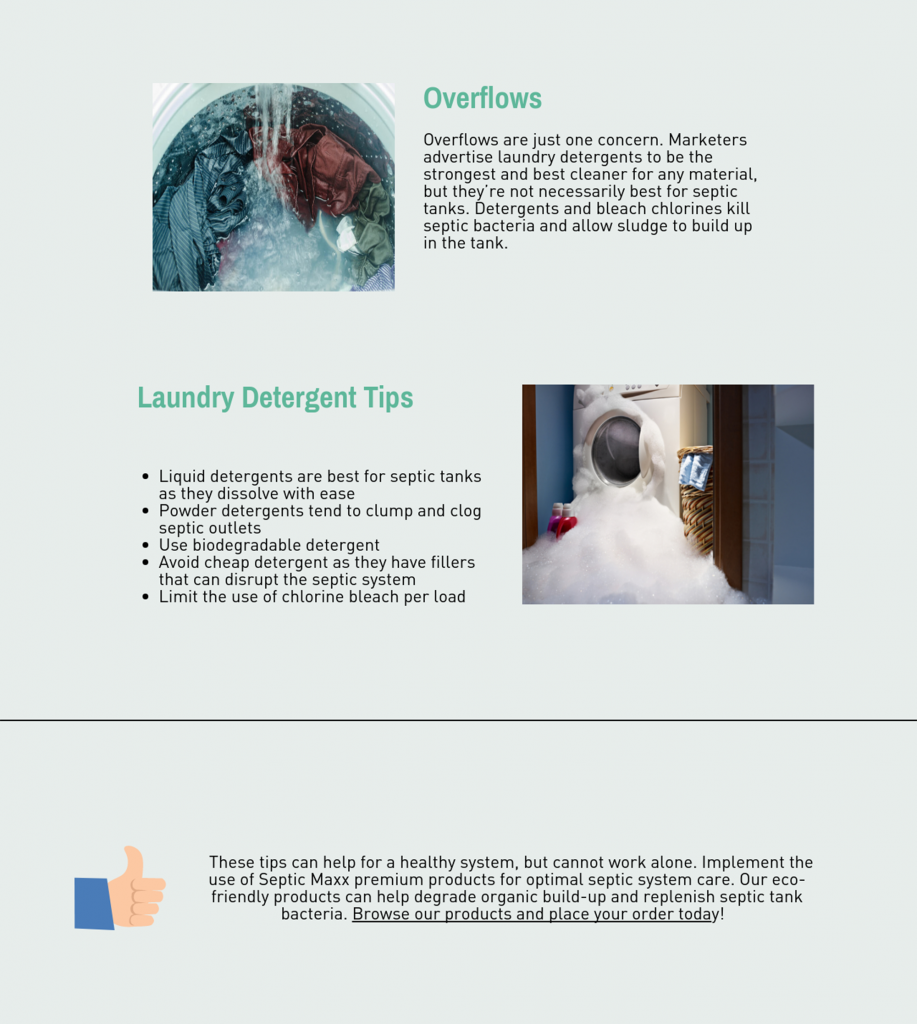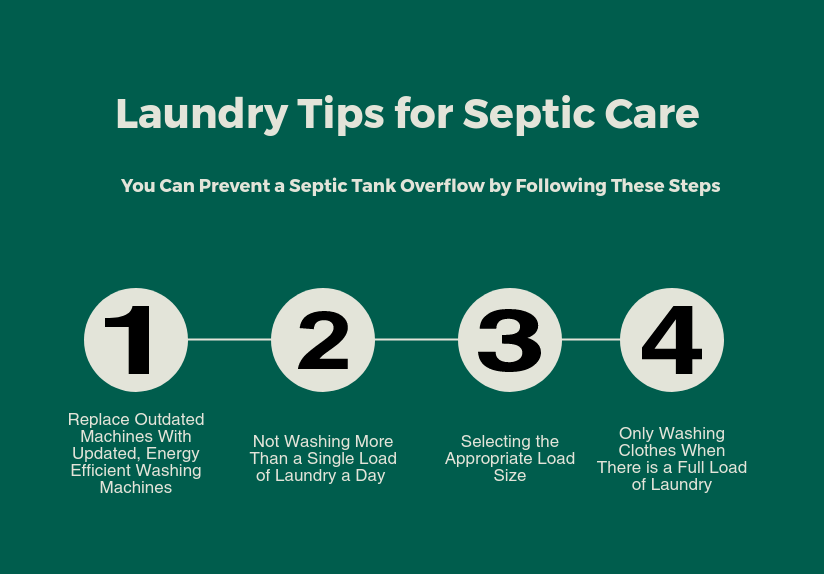Washing laundry has become an unavoidable household chore that millions of Americans tend to daily. The regularity of the matter does not take away from the possible dangers washing machines present to septic tanks. Homeowners nationwide can be adding to their own septic tank issues and have no clue.
Roughly 85% of American homes have washing machines. Their function is to clean clothes and linens for healthy living. This convenient home appliance is rarely second-guessed for its efficiency but is one of the leading causes of septic tank failure.
How Washing Machines Affect Septic Tanks
Washing machines primarily contribute to the amount of water, lint, dirt and disrupting chemicals in septic tanks. Every time a load of laundry is completed, all of the contents extracted are flushed out of the machine and into the septic tank.
A typical load of laundry can use 40 to 60 gallons of water, with older washing machines responsible for using the most water. Excess water in the tank is highly disruptive. It can cause solid waste to stir and rise from the bottom of the tank. When the water level in the septic tank rises above the outlet, sludge is more likely to flow out and into drain field pipes. Blocked pipes can burst and flood the drain field.
Excess water is not the sole contributor to septic system damage. Dirt, lint, and the many other solids that come from washing machines can also cause premature septic failure. The amount of lint collected alone throughout a year of washing can carpet a living room. The primary sources of such massive amounts of lint are polyester and nylon materials. These materials can float into the drain field and clog the porous pipes, ultimately reversing the system.


